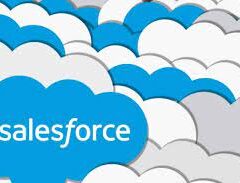The entity relationship diagrams (ERDs) featured in this insight elucidate significant connections among standard Salesforce objects, utilizing crow’s foot notation as part of Salesforce’s data modeling framework. The Salesforce Data Model shows the connection between fields, objects, and data.
The Salesforce data model is essentially a composition of objects and fields. Data modeling involves structuring data using objects, fields, and relationships. In Salesforce, the database adopts a relational structure, storing data in tables referred to as Objects. These tables consist of columns representing types and rows denoting records, with entries named fields or data records.
In Salesforce, objects play a pivotal role as they enable data storage, akin to tables in a database. Each object comprises multiple fields designed to house data effectively. Salesforce’s Data Model shows how each object relates to the others.
The core architecture of Salesforce is characterized by a multi-tenant structure, where a common application serves multiple groups or clients. This architecture ensures the security and isolation of data for each client, even though they share the same server.
Fields in the Salesforce data model are fundamental units of data storage, encompassing various types such as text, number, picklist, and date. These fields are utilized to store data specific to a particular object. For example, the Account object incorporates fields like Account Name, Account Number, and Phone.











